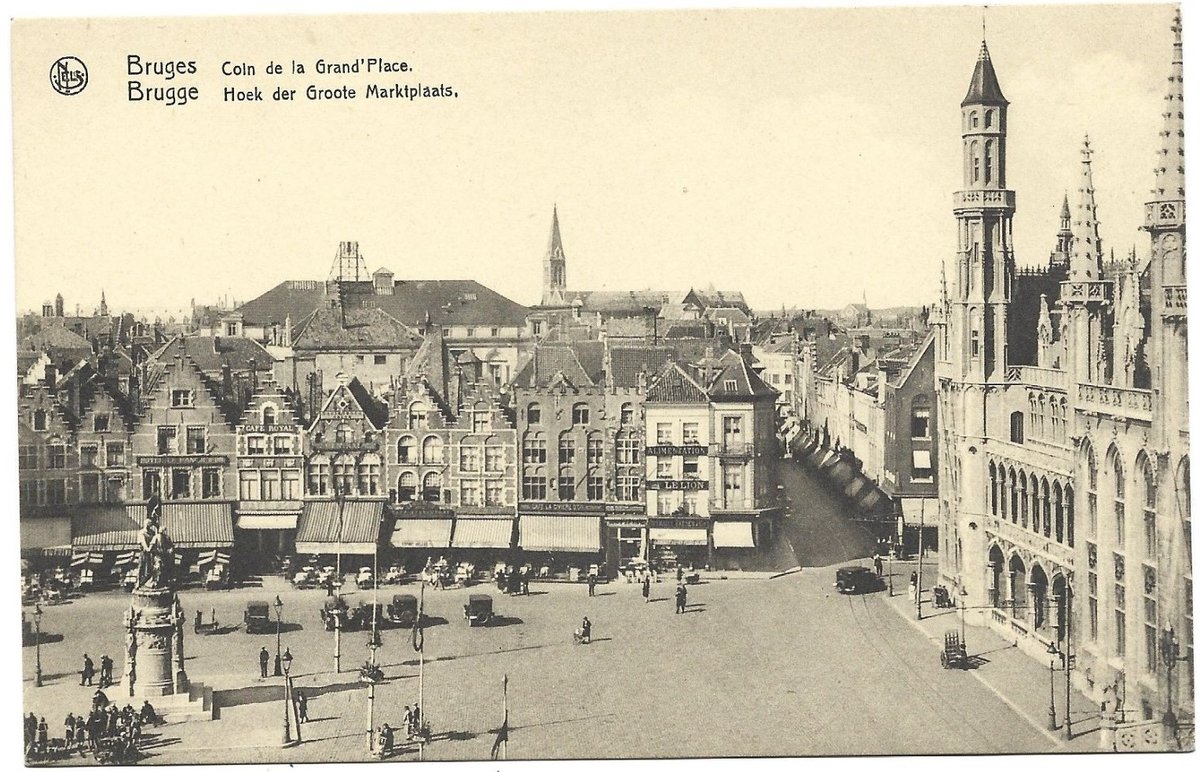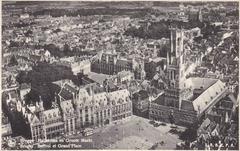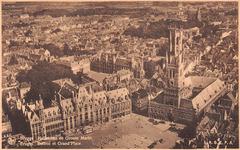
Philipstockstraat Bruges, Belgium: Visiting Hours, Tickets, and Historical Sites Guide
Date: 15/06/2025
Introduction
Philipstockstraat is one of Bruges’ most emblematic streets, weaving together centuries of history, architectural heritage, and vibrant urban life. Connecting the bustling Markt (Market Square) to Burg Square in the heart of the UNESCO-listed historic center, it reflects the city’s medieval legacy while embracing contemporary culture. This comprehensive guide details the street’s historical evolution, visitor information—including accessibility, hours, and tickets—nearby attractions, travel tips, and more to help you make the most of your exploration in Bruges (Wanderlog; townsofeurope.com).
Table of Contents
- History and Early Development
- Medieval Significance and Economic Role
- Architectural Heritage and Urban Fabric
- Transformations: Decline and Revival
- Notable Events and Cultural Significance
- Visiting Philipstockstraat: Hours, Tickets, and Accessibility
- How to Get There & Best Visiting Times
- Nearby Attractions and Guided Tours
- Photo Spots, Visuals & Media
- Visitor Tips: Dining, Shopping, and Events
- FAQ
- Preservation and UNESCO Status
- Plan Your Visit
History and Early Development
Philipstockstraat’s origins can be traced to the 12th century, when Bruges began developing as a major European trading hub. The street’s name is thought to derive either from the influential Philipstock merchant family or from “stock” (market stalls) that once lined the thoroughfare (Wanderlog). Its alignment was shaped by Bruges’ medieval expansion, facilitating movement between the city’s harbor, markets, and administrative centers—especially after the city’s commercial boom following the creation of the Zwin inlet in 1134 (The Traveling Cook Abroad).
Medieval Significance and Economic Role
During Bruges’ “Golden Age” (12th–15th centuries), Philipstockstraat became a vital artery for merchants and artisans. Its proximity to the Markt—with the Belfry and the Waterhalle—made it a prime location for commerce. Merchants from across Europe established counting houses and shops along the street, fueling Bruges’ status as a cosmopolitan trade center (Bruges Day Tours). The world’s first stock exchange, the Bourse, was established nearby in 1309, highlighting the street’s central role in European economic history (The Traveling Cook Abroad).
Architectural Heritage and Urban Fabric
Philipstockstraat is lined with a harmonious blend of Gothic, Flemish Renaissance, and neo-Gothic buildings. Key features include:
- Stepped gables and brick façades: Hallmarks of Flemish architecture.
- Stone-framed windows and decorative reliefs: Indicating the wealth of former merchant owners.
- Narrow, deep plots: Reflecting medieval property divisions.
Many structures have been carefully restored, and the street’s width and alignment remain true to the medieval layout, contributing to the authentic ambiance recognized by UNESCO (Bruges Day Tours; visitbruges.be).
Transformations: Decline and Revival
Bruges’ fortunes waned in the 16th century due to the silting of the Zwin inlet, causing a shift in trade to Antwerp. Philipstockstraat’s merchant houses were repurposed or fell into disuse (The Traveling Cook Abroad). However, this downturn preserved much of the street’s medieval architecture. The 19th-century revival—spurred by Romantic artists and early tourists—brought restoration efforts that returned many buildings to their former splendor (Bruges Day Tours).
Notable Events and Cultural Significance
- Procession of the Holy Blood: This annual religious procession, one of Bruges’ most important traditions, often passes near or along Philipstockstraat (Visit Bruges).
- French and Dutch Occupations: The street experienced administrative changes during the late 18th and early 19th centuries (The Traveling Cook Abroad).
- Tourism Boom: Since the late 20th century, Philipstockstraat has become a focal point for visitors, with its historic buildings now housing shops, cafés, and hotels (The Traveling Cook Abroad).
Visiting Philipstockstraat: Hours, Tickets, and Accessibility
- Hours: Open 24/7 as a public street; no entry fee.
- Accessibility: Mostly pedestrianized with cobblestone paving. Wheelchair users may encounter some uneven surfaces, but ramps and smoother paths are present at key intersections (accessibility.visitbruges.be).
- Shops & Restaurants: Generally open from 10:00 AM to 6:00 PM; many dining venues open later.
How to Get There & Best Visiting Times
- Train: Bruges railway station is a 20-minute walk.
- Bus: Several local buses serve stops near the city center.
- Car: Limited parking in the historic core; use park-and-ride lots.
- Best Times: Early mornings or late afternoons (especially midweek) to avoid crowds and enjoy optimal light for photography.
Nearby Attractions and Guided Tours
Philipstockstraat is a gateway to Bruges’ key landmarks:
- Belfry of Bruges: Iconic medieval tower with panoramic city views (Visit Bruges).
- Basilica of the Holy Blood: Houses a revered relic.
- Markt Square: Lively center with markets and historic guild houses.
- Jan van Eyckplein: Scenic square by the Spiegelrei canal.
Numerous guided walking tours and audio guides include Philipstockstraat as a highlight (booked.ai; thediscoveriesof.com).
Photo Spots, Visuals & Media
- Capture stepped gables and vibrant street life.
- The Municipal Theater façade is a favorite for architecture enthusiasts.
- Virtual tours and interactive maps are available on official tourism websites.
Visitor Tips: Dining, Shopping, and Events
- Dining: Indulge in Belgian waffles, chocolates, and regional beers at the street’s cafés (touropia.com).
- Shopping: Look for traditional lace, jewelry, and local crafts (townsofeurope.com).
- Events: Check local calendars for festivals, markets, or performances (visitbruges.be).
Frequently Asked Questions (FAQ)
Q: What are the visiting hours of Philipstockstraat?
A: Open 24/7; shops and restaurants usually 10:00 AM–6:00 PM.
Q: Are entrance fees required?
A: No, the street is free to access.
Q: Is Philipstockstraat wheelchair accessible?
A: Generally yes, with some limitations due to cobblestones; accessibility features are improving.
Q: Are guided tours available?
A: Yes, many local operators and apps offer tours that include Philipstockstraat.
Q: What are the best times to visit?
A: Early mornings or late afternoons for fewer crowds and better photo opportunities.
Preservation and UNESCO Status
Philipstockstraat’s preservation is integral to Bruges’ UNESCO World Heritage designation. Strict regulations protect the street’s historic façades and urban layout, balancing modern usage with heritage conservation (visitbruges.be).
Plan Your Visit
Philipstockstraat is a microcosm of Bruges’ enduring spirit—a place where medieval history, vibrant commerce, and cultural events converge. Open around the clock and easily explored on foot, it’s an essential stop for any visitor. For more travel resources, updates, and self-guided audio tours, download the Audiala app and follow us on social media.
References
- Wanderlog - Most Historic Buildings and Sites in Bruges
- Towns of Europe - Bruges Walk Center
- NL Wikipedia - Philipstockstraat
- Visit Bruges - Belfry
- Bruges Day Tours - Brief History of Bruges
- The Traveling Cook Abroad - Bruges History
- Creativitys.uk - Bruges Travel
- Nomadic Matt - Bruges Guide
- Booked.ai - Top 10 Must-See Attractions in Bruges
- Visit Bruges - Historic City Centre
- Accessibility Visit Bruges
- Touropia - Bruges Attractions
- Visit Bruges - Events Calendar
- The Discoveries Of - Bruges Map












































































